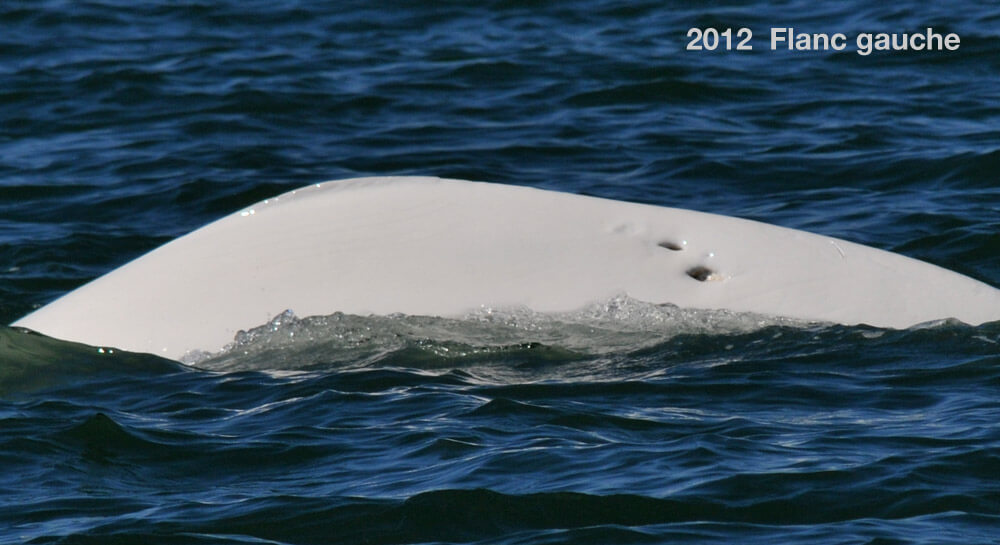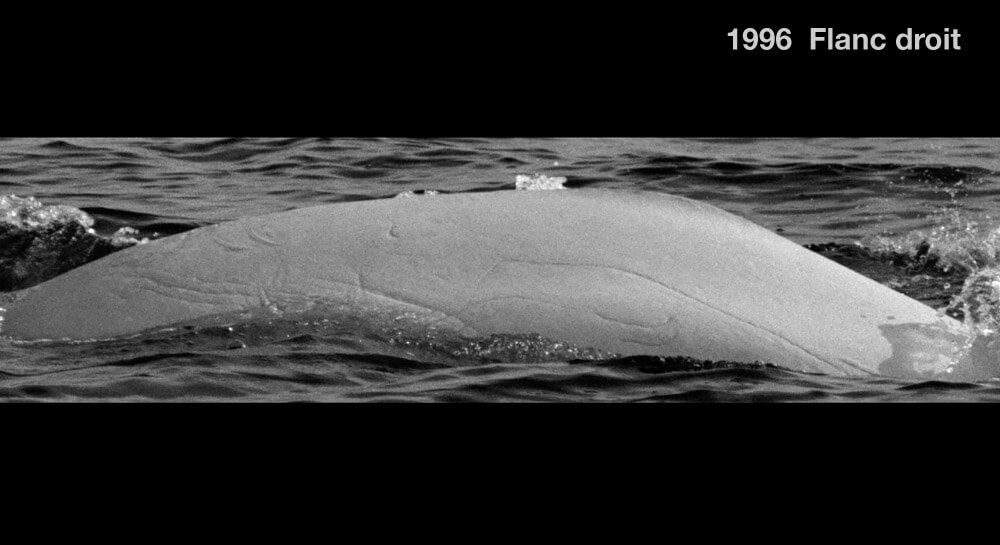Globule
Beluga


Adopted by the students of the Collège de Chicoutimi, En Vert
-
ID number
DL0060
-
Sex
Male
-
Year of birth
Around 1979
-
Known Since
1988
Distinctive traits
Globule is easily recognized by the two circular scars on the right peduncle, which have been accompanied by a slight depression since 1993. On the left, the only distinctive feature is a slight indentation at the end of the crest.
Life history
We first met Globule in 1988. At that time, he was slightly gray. From 1993 onwards, he was always recorded as white. He would therefore have been born around 1979.
Globule’s sex was confirmed by biopsy. Thanks to a piece of skin taken from his back, we were able to carry out a genetic analysis: he is a male. He belongs to one of the two male networks in the Saguenay.
At the time of our first encounter, Globule was a large grey beluga on the cusp of adulthood. He was considered to have turned white in 1993. Belugas generally reach adulthood between the ages of 8 and 14 for females and 16 and 18 for males. This maturity is accompanied by a change in skin color. Newborns have brown skin, then, up to around 2 years of age (bleuvets), are blue-gray. Juveniles (from age 2 to adulthood) have gray skin, and finally, adults have white skin.
Observations history in the Estuary
Years in which the animal was not observed Years in which the animal was observed
Latest news
Globule is in a large herd of around a hundred adult belugas, dispersed in a dozen sub-groups. We’re in the Île Verte area. Visibility is excellent in the early morning and, in addition to the belugas, we can see a dozen seals, minke whales and harbour porpoises. A good day’s work awaits us: we take it in turns to target the various groups of belugas scattered around the island and photograph the different individuals.
Sponsor
Students of the Collège de Chicoutimi, En Vert adopted Globule (1990).




